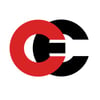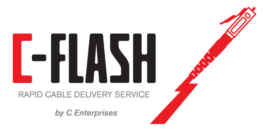 While there are several ways technicians can terminate fiber optic cabling, there are two main techniques users can choose today – factory pre-terminated or field termination. Both have redeeming factors and different elements to recommend them. Examining the pros and cons of each type can help you decide which would benefit your enterprise the most.
While there are several ways technicians can terminate fiber optic cabling, there are two main techniques users can choose today – factory pre-terminated or field termination. Both have redeeming factors and different elements to recommend them. Examining the pros and cons of each type can help you decide which would benefit your enterprise the most.
Pros and Cons of Field Terminated Cables
Purchasing field-terminated cables means sourcing a partner that has the proper tools, equipment, and technical training to make field terminated cable installation successful. One contraindication of field termination is that it requires more labor and experience and thus elevates labor costs. Another is the amount of time it takes to prepare for field termination. Users need the proper tool kit as well, which can include:
- Cable
- Connectors
- Crimper
- Disposal bin
- Epoxy
- Fiber and jacket strippers
- Oven
- Polishing pad
- Scissors
- Syringe
- Wipes
Traditional field termination has low material cost, but high labor costs; it takes a long time to field install connectors. If you choose pigtail splicing, you will encounter lower material costs but higher labor rates for technicians with fusion splicing equipment. With field termination, you may encounter quality issues, because the quality of the connection depends heavily on the skill of the technicians performing installation. This can lead to costs for repeating work that has failed, plus the price of additional connectors. In the long run, field termination can lead to extra costs on top of purchasing investments.
The benefits of field terminated fiber optic cable include easy cable pulling, scalability in meeting system requirements, and no need for exact length or slack storage. Since the user cuts backbone cable to length before adding connectors, one does not need to predetermine lengths. This can cut lead times and eliminate the need to implement slack storage. Users enjoy maximum flexibility to meet unique system requirements, because one simply pulls the fiber cables and terminates them later. Field termination enables fast on-site repairs if a fiber link becomes defective. Finally, field termination lets users easily pull bulk cable from either end of the circuit.
Pros and Cons of Pre-Terminated Cables
Pre-terminated cables come directly from the manufacturer ready for installation. They are a plug-and-play solution that requires minimal time and effort to implement. As such, these cables are a faster and simpler alternative to field termination. Pros of this option include superior performance and cost savings. Since manufacturers conduct comprehensive fiber cable testing before shipping pre-terminated cables, users can rest assured about code compliances, quality, and performance of their cables.
Users also enjoy low-cost installations, significantly cutting labor costs associated with cabling. Users do not need tool kits, splicing equipment, or technicians who specialize in field terminations. According to past customers, pre-termination saves an average of 20-30 percent of the cost of field termination, due to lower labor costs and time saved.
Pre-terminated cables come with no need to test network performance, reduce downtime, deploy quickly, and are easy to maintain. They are better for the environment, eliminating waste and consumables associated with field termination. With reduced material costs and better flexibility, they are the cables of choice for most modern-day users.
Yet pre-terminated cables are not without their pitfalls. Some disadvantages include the requirement for accurate measurement, increased material costs, higher return loss and insertion loss, and limited access to individual circuits. Since manufacturers make MPO trunk cables to order in predetermined lengths, users must plan lengths and lead time in advance. Measurements must be exact to avoid needing slack storage. Miscalculations and slack storage can lead to additional expense.
Weigh the pros and cons of each solution carefully before making your decision.







